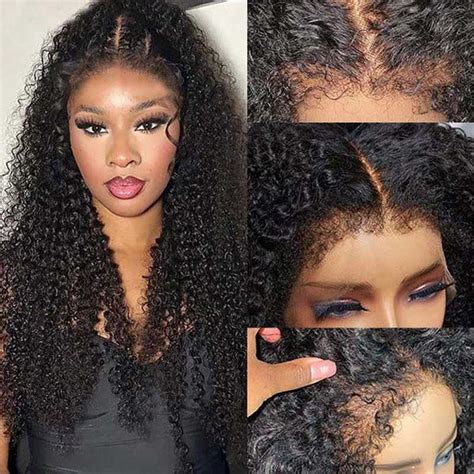Lace wigs have revolutionized the hair industry, offering unparalleled versatility and natural-looking styles. However, securing your precious lace wig requires a reliable adhesive like lace wig glue. Navigating the world of adhesives can be overwhelming, but this comprehensive guide will empower you to choose and use the perfect lace wig glue for your every need.

Types of Lace Wig Glue
1. Water-Based Glues:
- Solvent-free and generally safe for sensitive skin
- Easy to apply and remove
- Hold strength varies, but usually suitable for short-term wear
2. Alcohol-Based Glues:
- Contain alcohol solvents, which can be irritating to the skin
- Strong hold with a matte finish
- Suitable for long-term wear and high-activity hairstyles
3. Solvent-Based Glues:
- Contain strong solvents, making them potentially damaging to the hair and skin
- Ultra-strong hold with a waterproof finish
- Not recommended for sensitive skin or everyday use
Choosing the Right Lace Wig Glue
Consider these factors when selecting an adhesive:
- Skin Type: Sensitive skin requires water-based glues, while thicker skin can tolerate alcohol-based options.
- Hold Strength: Determine the desired hold time and activities you plan to engage in while wearing the wig.
- Lifestyle: If you lead an active lifestyle, waterproof and long-lasting glues are ideal.
- Hair Type: Delicate hair requires gentle water-based adhesives, while coarser hair can withstand stronger glues.
Application Techniques
- Cleanse and Prepare the Skin: Remove any oils or buildup with a gentle cleanser. Allow the skin to air dry completely.
- Apply a Thin Layer of Glue: Use a brush or cotton swab to apply a thin layer of glue directly to the lace front.
- Place the Wig: Carefully place the wig onto the glued area and press down firmly to secure it.
- Hold the Wig in Place: Apply pressure to the hairline and edges for several minutes to ensure a strong bond.
Maintenance Tips
- Clean the Lace Wig: Use a mild shampoo and conditioner to wash the wig and remove any product buildup.
- Re-apply Glue as Needed: Long-term wear may require periodic re-application of glue to maintain a secure hold.
- Protect the Wig from Water and Heat: Avoid excessive exposure to water to prevent glue from loosening. Use a heat protectant spray when styling with heat tools.
Common Mistakes to Avoid
- Using Too Much Glue: Excess glue can cause discomfort, hardening, and damage to the skin or hair.
- Applying Glue to Damaged Skin: Avoid applying glue to irritated or broken skin, as this can worsen the condition.
- Not Allowing the Glue to Dry Completely: A wet bond will loosen easily. Allow the glue to dry thoroughly before handling or styling the wig.
- Pulling on the Wig: Avoid forcefully pulling on the wig, as this can damage the lace or loosen the bond.
Pros and Cons of Lace Wig Glue
Pros:
- Secure Hold: Provides a strong and durable bond that keeps the wig in place for extended periods.
- Versatile: Available in various types to suit different skin types and hold requirements.
- Non-Damaging: Water-based glues are gentle on the hair and skin.
Cons:
- Skin Irritation: Some glues can irritate sensitive skin.
- Removal Difficulty: Strong-hold glues can be difficult to remove without damaging the wig or hair.
- Bond Weakening: Excessive moisture or heat can loosen the glue bond.
Innovative Applications of Lace Wig Glue
Beyond securing lace wigs, the versatility of lace wig glue extends to numerous creative applications:
- Temporary Hair Extensions: Create instant volume and length by gluing hair extensions to natural hair using lace wig glue.
- Edge Control: Tame unruly edges and define hairstyles by applying a small amount of glue to the hairline.
- Artistic Body Art: Create intricate designs on the skin using lace wig glue as an adhesive for glitter, gems, and other embellishments.
Useful Tables
| Lace Wig Glue Type | Hold Strength | Skin Type | Removal Difficulty |
|---|---|---|---|
| Water-Based | Low-Medium | Sensitive | Easy |
| Alcohol-Based | Medium-High | Normal | Moderate |
| Solvent-Based | Ultra-High | Thick | Difficult |
| Skin Sensitivity Level | Recommended Lace Wig Glue Type |
|---|---|
| Sensitive | Water-Based |
| Normal | Water-Based or Alcohol-Based |
| Thick | Alcohol-Based or Solvent-Based |
| Lifestyle | Recommended Lace Wig Glue Hold Strength |
|---|---|
| Everyday Use | Low-Medium |
| Special Occasions | Medium-High |
| Active Lifestyles | Ultra-High |
| Hair Type | Recommended Lace Wig Glue Type |
|---|---|
| Delicate | Water-Based |
| Coarse | Alcohol-Based or Solvent-Based |
| Synthetic | Alcohol-Based or Solvent-Based |
